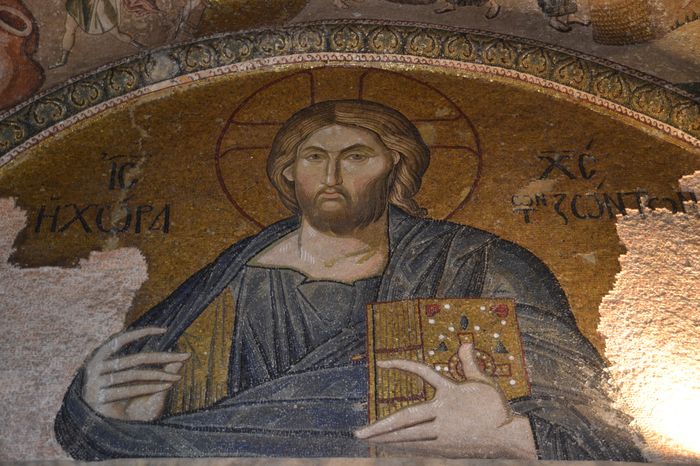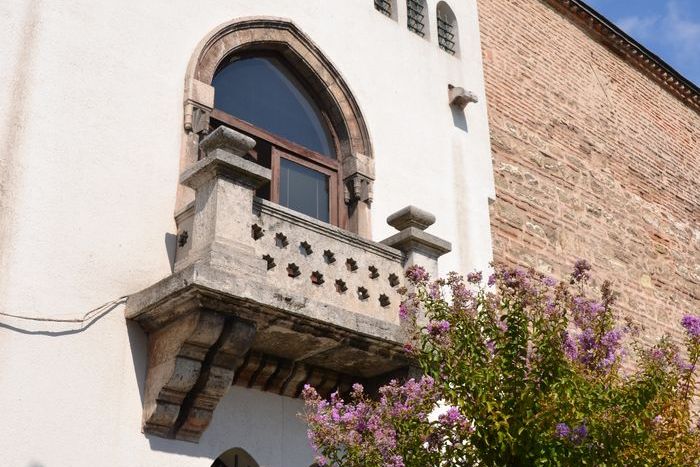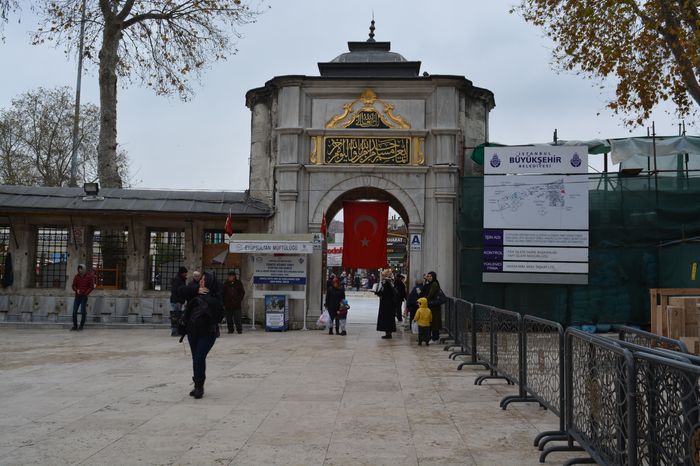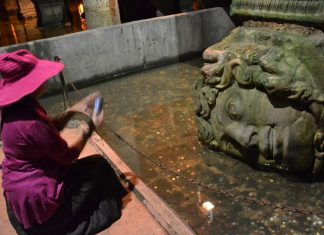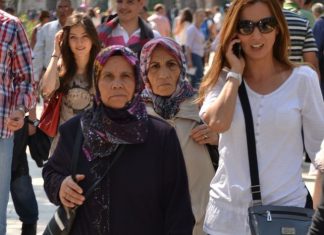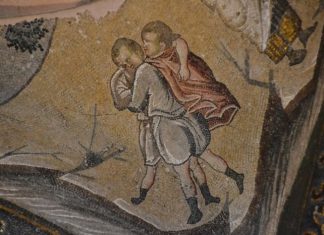Early and late, these frontier encounters changed little. The division of the lands remained what it is today: one population in the more mountainous regions of northern Mesopotamia (then Armenians, now Kurds), one population in southern Mesopotamia, most likely with connections to Iran (where we now find Shiite Muslims), and one population in the Syrian desert on both sides of the Euphrates (the land of the Sunni Muslims of Iraq). The Armenians, long independent in the mountainous lands to the north, were really an outlying remnant of an older Persia, on which they had depended, and the Christianity of Armenia was a privilege of aristocrats, who used it to help create an independent identity for themselves and their people. The border between Roman and Persian influence shifted back and forth from the third century onward, but until the age of Justinian, the real effect of these border skirmishes was slight to positive.
Modern Aleppo
The infusion of men and resources from outside the area to fortify and defend the borderlands undoubtedly had something to do with the flourishing prosperity of some improbable places. The limestone highlands west of modern Aleppo were one of the most intensely cultivated and densely populated rural zones of the empire, relatively democratic in their small villages and abundant in their agricultural production, especially during the fifth and sixth centuries. In the days of Anastasius, there were rumblings again in those parts, some of the things that frightened the author of the oracle of Baalbek, and the kind of frontier skirmishes that two elaborate empires can afford to undertake against each other customized daily istanbul tours.
Diplomatic relations
Persia in those years demanded a demilitarized frontier and sought diplomatic relations through mutual recognition of rights, adoption of one another’s imperial children, and a Roman subsidy for defensive works along the western shores of the Caspian near modern Baku in Azerbaijan, from which both empires benefited. That Caspian route was a traditional passage through which Huns and other northerners and steppe men would come marauding into the more fertile and settled lands south of the great Eurasian seas. Kavadh, the Persian ruler who made this proposal, was himself a man of parts, supported by Hephthalite Huns from the north and allied with a fire-breathing religious movement called the Mazdakites. A cynic would say that he saw in Rome a source of cash; a strategist would pause and wonder if we should not take him more seriously.
An ancient or modern student with a western focus could easily conflate and confuse all the regimes, peoples, and movements that have made Iran their home. This flatters modern Persian nationalism and offers an easy outlet for ancient hostilities, but Persia of the fifth century was no more the Persia of Xerxes than was Rome the Rome of the Scipios. The empire that Rome faced was loosely connected, spread over a wide territory, and a focus of religious controversy between the more traditionalist Zoroastrians—the state religion—and the newfangled Mazdakites. (Mazdak was a Zoroastrian priest and at the same time a social revolutionary fighting against taxes. Kavadh seems to have thought the Mazdakites a useful counterbalance against the decentralized and hereditary nobility.)
Kavadh’s successor Khusro restored the Zoroastrians firmly to favor, but from that time until the end of the Persian monarchy we observe a gradual permeation of the highest classes of the regime by Christian individuals and ideas. (Khusro II, ruling in the late sixth century, received help from the Romans when he was temporarily ousted by a coup in 590, and once back in power kept peace with Rome until a change of imperial regime ignited hostilities. He had a Christian wife, a Nestorian Christian finance minister, and a Christian general in his closest circle.)
Persia was its decentralization
One strength of Persia was its decentralization. The shah (for so the ruler was already called) was a king of kings, and his subsidiary kings, strong local rulers deep-rooted in the land and people, were the strength and weakness of the whole. They were strength in that they kept the empire based in its native peoples and drew support and resources directly from them, but they represented weakness in that the shah’s position depended on his ability to herd these royal cats Asian provinces of Alexander’s empire.
Cat-herding empires do not prevail for very long. The more one tries to create a central power, the more one needs a consistent mechanism of taxation. Ancient societies had no reasonable way to measure the amount of local wealth that taxes could draw on to support a central government without draining the life out of the society. Instead they exploited incompetence and corruption to manage the process of trial and error by which they found out whether they could sustain themselves or not. They set tax rates high, and then sent dishonest and amateurish men out to collect the taxes. When revenues were not high enough, they increased the rates and sent more tax collectors out. If they could gather enough revenue in this way, then the regime was a success. If not, it collapsed. In Persia, in the end, the strength of the local magnates prevailed. They survived to reinvent themselves under Islamic rule when Persia itself vanished from the stage of history. The language and people endured and eventually restored the Persian name to the prevailing regime.
